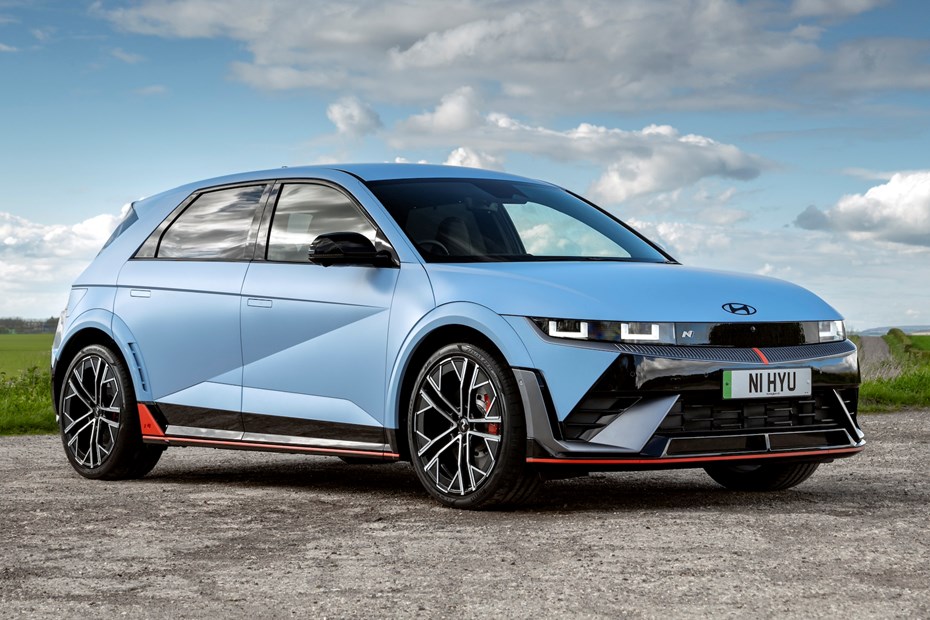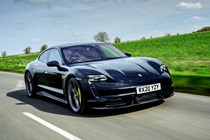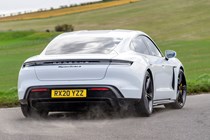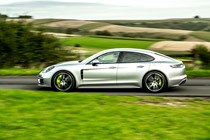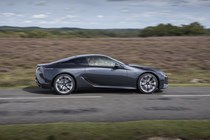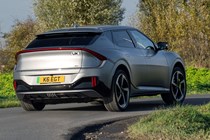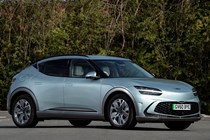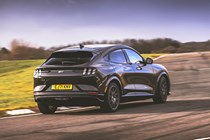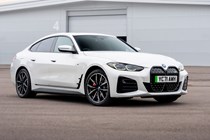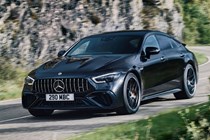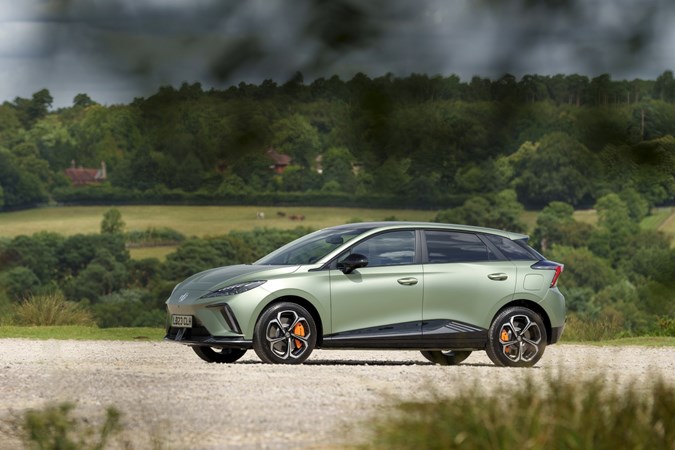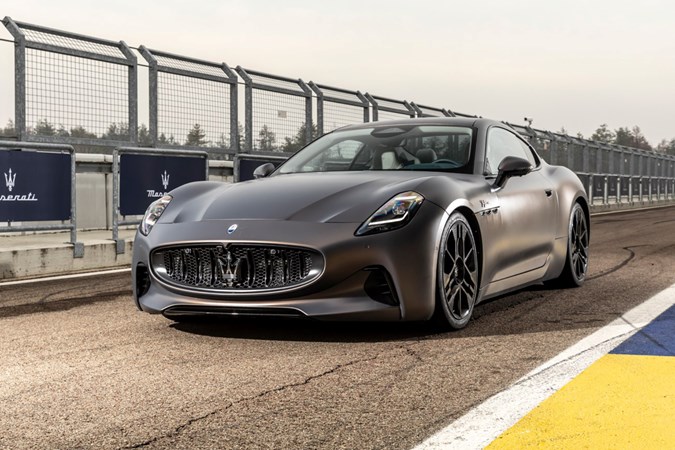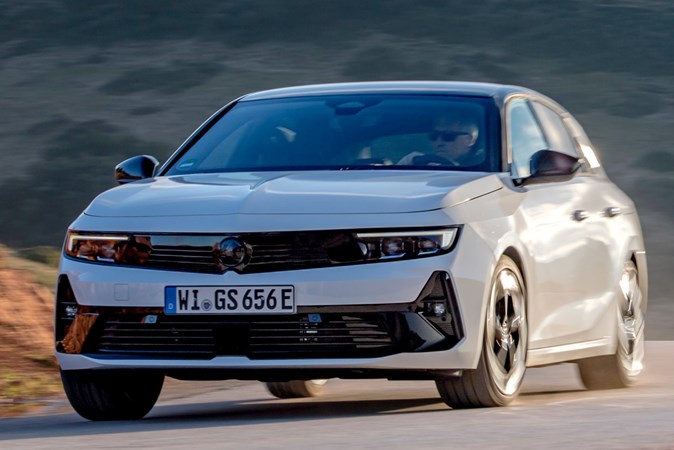The best hybrid and electric sports cars could well be the best of both worlds. Why? There’s a misconception that sports cars can’t be eco-friendly – a sort of urban myth that going fast and going hybrid or fully-electric are mutually exclusive.
But that is not the case at all, and there’s now a variety of sporting models with some form of hybrid or electric power. This is a list that’s constantly evolving – and growing – so do keep checking in.
But here for now, are 10 of the best cars you can buy right now that will raise both your eco credentials and your heart rate.
Best hybrid and electric sports cars
Best at: scorching away from the lights and making you laugh
Yes, its £65,000 starting price looks quite high when you compare it to a petrol-powered hot hatchback, and it's bigger and heavier than you'd think. But while the Audi RS 3 is cheaper, it still has a starting price of around £56,000 – and this Hyundai will tear it to shreds in a straight line. Right now, it's the king of the hybrid and electric sports cars.
To find out more, read our full Hyundai Ioniq 5 N review
Pros
- Staggering performance
- Entertaining to drive
- Clever technology
Cons
- It weighs 2.2 tonnes
- Petrol rivals are cheaper
Best for: Being so much fun, you'll forget it's an EV
Yet, it handles like a two-door sports car, and its electric motors allow it to produce up to 761hp – enough to sprint from 0-62mph in just 2.8 seconds. Drive more sedately, and you’ll get closer to the WLTP range of 301 miles.
To find out more, read our full Porsche Taycan review
Pros
- Epic performance
- Zero emissions
- More practical than a traditional sports car
Cons
- Weighs two tonnes
- Heavy depreciation
Best for: Being a luxury saloon that packs a serious punch
The more efficient E-Hybrid gets 462hp from its V6 plug-in hybrid system, while the S E-Hybrid has 560hp, and the Turbo S E-Hybrid has a massive 700hp. All three will manage short trips on electric power alone, and they’re brilliant to drive, but we reckon the S E-Hybrid is the one to go for because it’s so much cheaper than the full-fat Turbo.
To find out more, read our full Porsche Panamera review
Pros
- High tech + lux
- Comfortable
- Cutting-edge driving technology
Cons
- Quite tight in the rear
- Outclassed by a Taycan
Best for: Value for money
It’s ridiculously fast in a straight line and remains liveable day to day thanks to it chunky driving range per charge and generally comfortable ride. Despite being well equipped, it still undercuts most far slower rivals on price as well, making it ridiculously good value.
To find out more, read our full MG4 EV XPower review
Pros
- Cheaper than most petrol hot hatches
- Brutal acceleration
- Just as practical as a regular MG4 EV
Cons
- Uninspiring to drive
- Minimal interior changes
Best for: Being an EV that doesn't look like an EV
Its pricing is punchy, reflecting the ultra-luxury position Maserati is targeting, and it’s pretty cramped in the rear. But its main selling point is that it’s a softer, more relaxing, better looking and more characterful Porsche Taycan.
To find out more, read our full Maserati GranTurismo Folgore review
Pros
- Beautiful
- Very fast
- Great to drive
Cons
- Not that efficient
- You'll miss the V8 roar
Best for: Being a fast and very well-rounded EV
All this performance does come at a cost, however. Less powerful EV6s will comfortably do 300 miles on a charge, while with the GT, it tumbles to around 260 miles.
To find out more, read our full Kia EV6 GT review
Pros
- Rapid acceleration
- Sharper to drive than regular EV6
- Manages to retain most of EV6’s good points
Cons
- Intrusive road roar
- Range not that great
Best for: Turning heads and getting people asking questions
You can’t quite get the full-fat 585hp in the GV60, but 435hp (with a big boost button that gives you access to 490hp for 10 seconds) means it’s still mind-bendingly fast. While the interior is far more geared towards luxury than sport when compared with the EV6 GT.
To find out more, read our full Genesis GV60 review
Pros
- Impressive interior
- Rapid in a straight line
- Very comfortable
Cons
- Intrusive road roar
- Range not that great
Electric SUV with an iconic name
The go-faster GT model has 487hp and four-wheel drive, allowing it to get from 0-62mph in just 3.7 seconds. In short, you get the enviable mix of supercar pace and practical SUV space without any tailpipe emissions.
Read our full Ford Mustang Mach-E review
Pros
- Quick and fun
- Appealing mix of old and new
- Fairly efficient
Cons
- Hard ride
- Not one for purists
BMW i4
Best for: Being accessible and amazing to drive
It still handles like a BMW should – the additional weight doesn’t mean it suffers in terms of cornering ability or ride comfort. The M50 version gets a second electric motor on the front axle, giving it all-wheel drive and a total power output of 544hp. Some of that’s unlocked in ‘boost’ mode, which brings the 0-62mph sprint down to an impressive 3.9 seconds.
To find out more, read our full BMW i4 review
Pros
- Great range and performance
- Fabulous steering
- High-quality interior
Cons
- Not very spacious
- Expensive compared with Tesla
Best for: Keeping a low profile
Officially it’ll do close to 40 miles on pure electricity and while it’s pretty slow compared to a lot of cars on this list, the GSE doesn’t feel too overburdened with electric torque and the chassis tweaks over the regular Astra do a good job of containing the mass. It’s a subtle and practical performance car.
Read our full Vauxhall Astra GSe review
Pros
- Good value
- Most sensible car on this list
- Low BIK
Cons
- Maybe too sensible for some
- Noisy engine
Best hybrid and electric sports cars FAQ
What are the fastest hybrid and electric sports cars?
There are plenty of super-fast hybrids to choose from – many of which, from the likes of Ferrari or McLaren, are firmly in the dream car academy. However, in the real world, the Porsche Panamera E-Hybrid is the king of the hill.
It’s there for you if your lifestyle doesn’t support a full-electric Taycan and won’t disappoint in terms of outright acceleration. Available in three power levels, you’ll naturally want the range-topping 700hp Turbo S E-Hybrid with its 0-62mph time of 3.2 seconds
Does a hybrid engine affect the performance of a sports car?
Not really, although the additional weight and complexity that comes with the system means that it will have to work harder to go fast with all that mass to overcome. Also, if it’s a plug-in hybrid, and depending on how it works, there will be a tail-off in performance when the battery pack is discharged – although many store a small amount to use for a power boost when it is needed.
We’d also mark down hybrids – generally – for having worse brake feel than standard cars. This is because often the system works in conjunction with the motor’s regenerative capacity (when you back off, the motor harvests energy by creating ‘drag’ of its own, and sometimes the switchover from regen to brake pads can be less than smooth or progressive.
How far can an electric sports car go on one charge?
Interestingly, the most powerful electric sports cars have the best range, as their energy-hungry motors need a lot of ‘juice’. Superfast saloons such as the Tesla Model S Plaid and Mercedes-AMG EQE have 400-plus mile claimed ranges, although we’d stop. short of calling them sports cars. Our current favourite. the Porsche Taycan has a claimed best range of 301 miles, which we’d peg at about 250-275 in real-world driving.
What is the fastest electric sports car?
If we venture into the world of hypercars, it’s the Aspark Owl, which will scorch from 0-62mph in 1.69 seconds and go on to a maximum speed of 245mph. Back in the real world, where you can actually go to a dealer and buy one for a monthly payment, the Porsche Taycan takes the prize in 2.8 seconds, with the Audi E-Tron GT taking 3.3 seconds. If you want to see a full list, take a look at our sister publication, CAR’s fastest EV page.
Keith Adams is the Editor of Parkers. During his career he has been the editor of Classic Car Weekly, Modern Classics and Honest John Classics, as well as writing for CAR magazine, Practical Classics, Octane, Autocar and The Independent among others. Keith lives in rural Lancashire and enjoys buying and selling cars and reading and writing about them.



